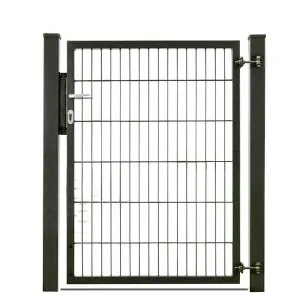
Oct . 08, 2024 08:39 Back to list
Exploring the Benefits of Wire Reinforcement in Construction and Engineering Applications
Understanding Wire Reinforcement Enhancing Structural Integrity
Wire reinforcement is a critical aspect of modern construction and engineering, playing a vital role in enhancing the strength, durability, and stability of various structures. This technique involves the inclusion of steel wires within concrete or other composite materials, which significantly improves their tensile strength and overall performance. As the demand for sustainable and robust construction materials continues to rise, wire reinforcement has become an indispensable component across multiple industries.
The fundamental principle behind wire reinforcement lies in the juxtaposition of materials with differing properties. Concrete, while excellent in compression, lacks tensile strength. When subjected to stress, it is prone to cracking and failure. By incorporating wire reinforcement, these weaknesses are mitigated. The wires, typically made of high-strength steel, effectively distribute tension forces, thus preventing the exponential spread of cracks and enhancing the structural integrity of the concrete.
There are several methods of implementing wire reinforcement, with two of the most common being welded wire mesh and steel rebar. Welded wire mesh consists of a grid of steel wires that are welded together at their intersections, providing a uniform reinforcement throughout a concrete slab. This method is often used in slabs and pavements, where even distribution of loads is critical. Steel rebar, on the other hand, refers to individual rods that can be placed strategically in concrete to withstand tensile forces. Rebar is commonly used in beams, columns, and other load-bearing elements.
wire reinforcement

The use of wire reinforcement extends beyond conventional concrete applications. It can also be found in precast concrete products, such as pipes, panels, and blocks, where the controlled environment of manufacturing allows for precise reinforcement placement. Moreover, advancements in construction technologies, such as 3D printing, have led to innovative applications of wire reinforcement, further pushing the boundaries of what is possible in structural design.
Environmental considerations have also prompted an increased focus on wire reinforcement. As the construction industry seeks to reduce its carbon footprint, the strength and durability provided by wire reinforcement contribute to longer-lasting structures that require less frequent repairs or replacements. This not only saves resources but also leads to more sustainable building practices overall.
In summary, wire reinforcement is a fundamental element in the construction industry, serving to enhance the performance and longevity of structures. By addressing the inherent weaknesses of materials like concrete, wire reinforcement methods such as welded wire mesh and rebar provide essential support that is indispensable for modern engineering demands. As technology and sustainability practices evolve, the role of wire reinforcement will undoubtedly expand, continuing to shape the future of construction and architecture. The long-term benefits of implementing effective wire reinforcement systems will resonate for generations, creating safer and more resilient environments in which we live and work.
-
Why a Chain Link Fence is the Right Choice
NewsJul.09,2025
-
Upgrade Your Fencing with High-Quality Coated Chicken Wire
NewsJul.09,2025
-
The Power of Fence Post Spikes
NewsJul.09,2025
-
The Best Pet Enclosures for Every Need
NewsJul.09,2025
-
Secure Your Property with Premium Barbed Wire Solutions
NewsJul.09,2025
-
Enhance Your Construction Projects with Quality Gabion Boxes
NewsJul.09,2025
Products categories











